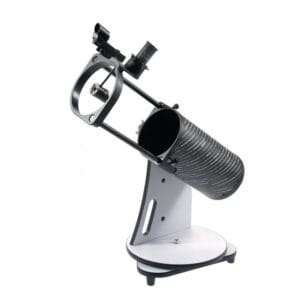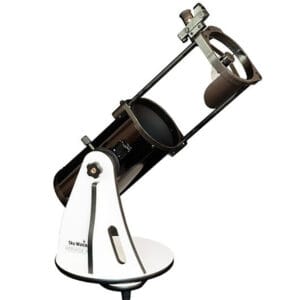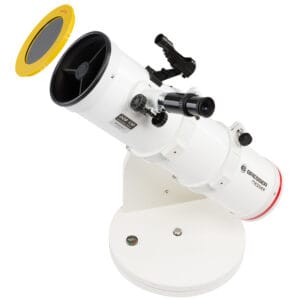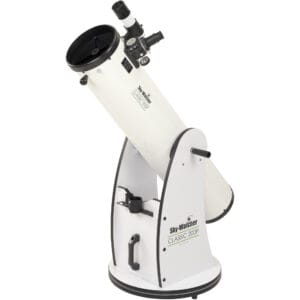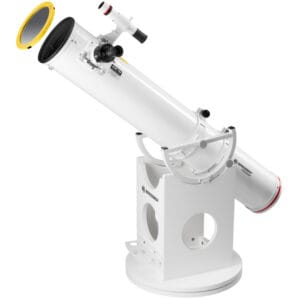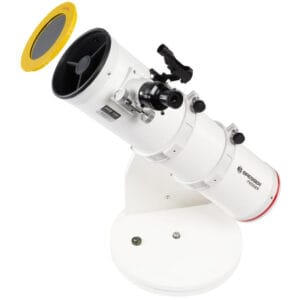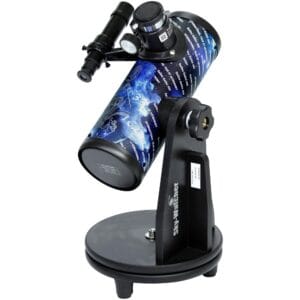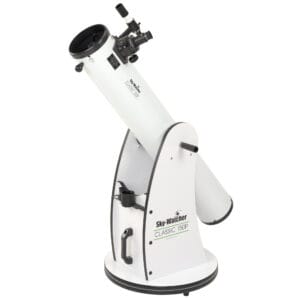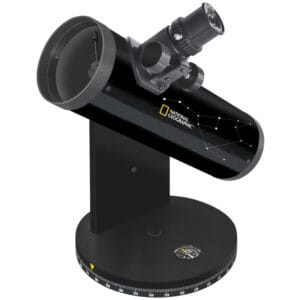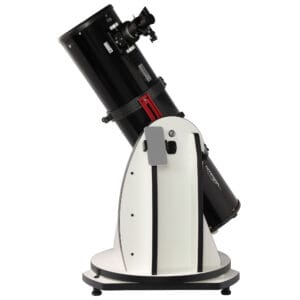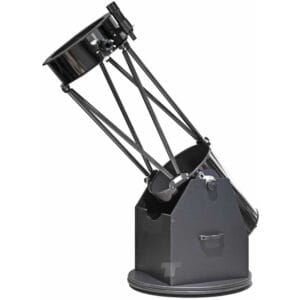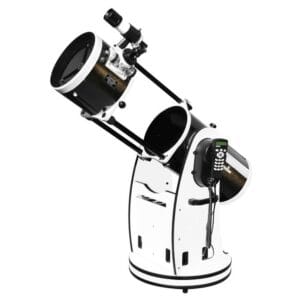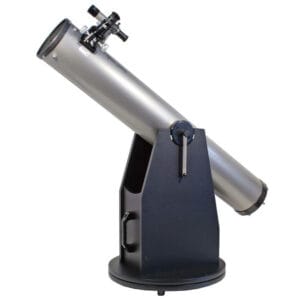Dobsonians

Showing 1–20 of 23 resultsSorted by popularity
Showing 1–20 of 23 resultsSorted by popularity
Dobson telescope knowledge center
What is a Dobson telescope?
A classic Dobson telescope consists of two parts: the telescopic tube and the wooden base.
The tube itself is a Newton reflector, a type of telescope that uses mirrors to collect light and direct it to the eyepiece. The primary mirror at the back of the tube captures the light, while the smaller secondary mirror the image reflects to the side of the tube, where you look through the eyepiece.
What a Dobson distinguishes it from other Newtonians is the mount. The famous amateur astronomer John Dobson designed in the 1970s a simple, extremely stable azimuthal “rocker box” base.
The telescope rests in a wooden cradle with Teflon bearings, allowing you to move it smoothly horizontally and vertically. No motors, no tripod legs to trip over, just point and observe. Even children learn how to operate a Dobson within minutes.
Thanks to its simplicity, robustness and low price per millimeter of mirror area, the Dobson has become the most popular design for deep-sky observations. Beginners appreciate the ease of use, experienced amateurs appreciate the optical performance.
What is the best Dobson telescope?
There is no “best Dobson,” only the best one for your situation.
The right choice depends on your experience, observation site and how much weight you want to lift.
For most observing purposes, we recommend a Dobson of at least 200 mm (8 inches). to. With that, you can see most deep-sky objects with significantly more detail than with smaller telescopes.
Want lighter travel or limited storage space? Then choose a tabletop or collapsible/truss variant.
Do you find it difficult to find objects? Then consider a Push-To or GoTo Dobson, these models help you through a digital search system without the need to star hop yourself.
Manufacturers such as GSO and Sky-Watcher offer several smart designs today:
From classic full-tube models to collapsible Dobsons that can be set up in minutes.
This way you benefit from large mirrors without transportation or setup becoming a problem.
What is a Dobson telescope suitable for?
Dobson telescopes are built for visual observation of deep-sky objects, Think galaxies, nebulae and open clusters.
The large mirror captures a lot of light, which is essential for faint objects outside our solar system.
Yet they are also excellent for:
the Moon, with razor-sharp craters and rills;
Jupiter, with cloud bands and the four Galilean moons;
Saturn, with clearly visible rings;
and on larger models even subtle details on Mars.
As a rule of thumb:
The larger the mirror (the opening), the more light the telescope collects
and the more details you see.
But beware of “aperture fever”: a larger telescope also means a heavier tube and base. So find a balance between opening, weight and convenience. A 200 mm Dobson is the perfect middle ground for most observers.
Types of Dobsons
Table-Dobsons - Small, light and ideal for quick observations or young users.
Classic Dobsons - fixed tube, maximum stability and optical performance.
Collapsible or truss Dobsons - easy to transport, while maintaining luminosity.
Push-To/GoTo-Dobsons - with digital object location and automatic tracking.
Advice from Telescoop.co.uk
Whether you're buying your first telescope or looking to add a larger mirror to your collection, our experts are happy to help you personally.
We advise clients daily on aperture, mount, accessories and use.
Feel free to contact us for honest advice, we are not a call center, but a team of real stargazers with hands-on experience.

